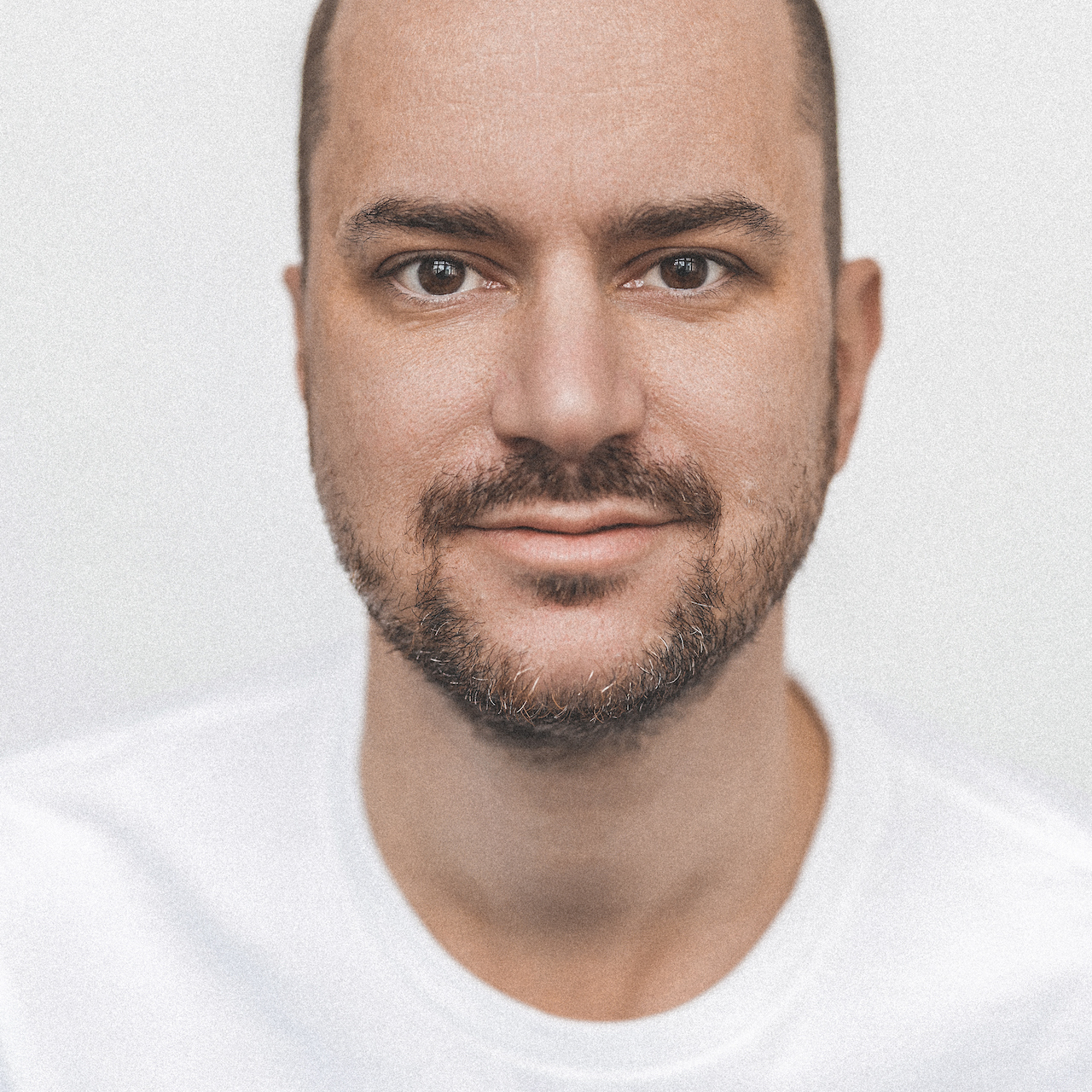Find Your Purpose
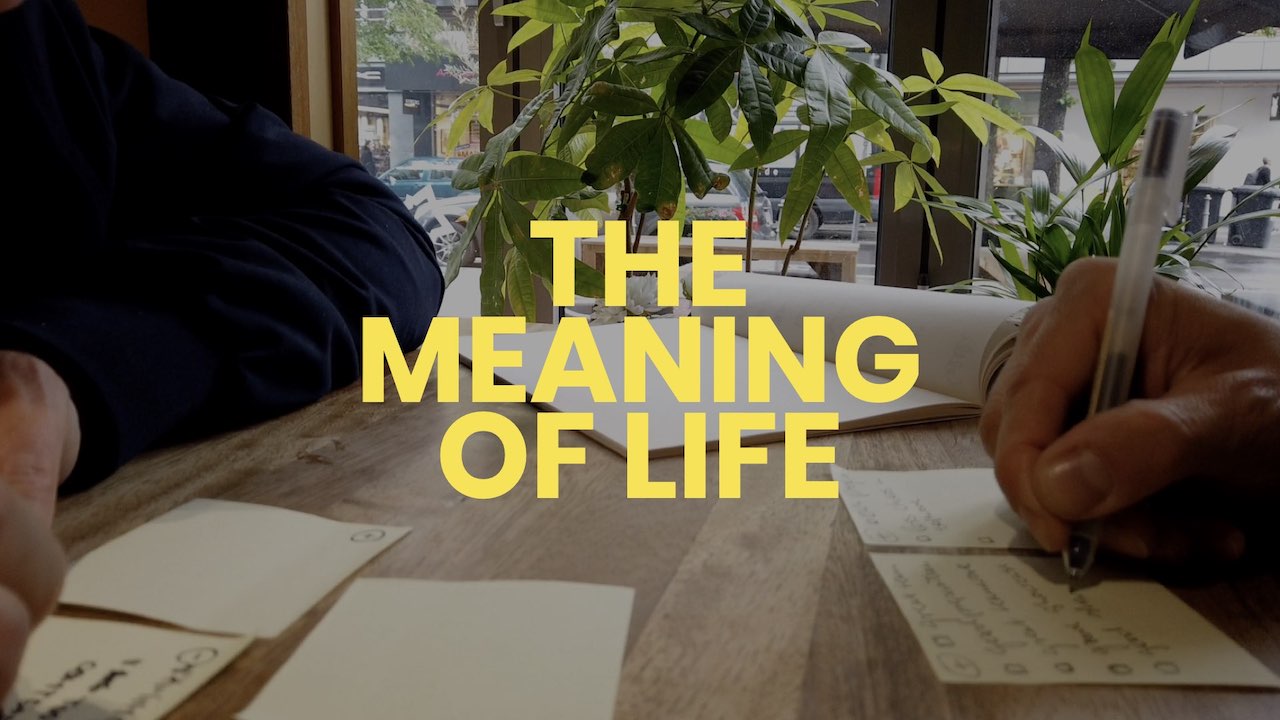
What is your purpose in life? Why are you here? What do you want to achieve?
To understand your audience as product designer, it is important to understand their context. To understand what their purpose is. A purpose is a mental state of commitment – a commitment not only to carry out actions, but to an idea.
We humans constantly strive for finding our purpose, or, if we already found it, act on it. But how can understand someone’s purpose who probably doesn’t fully understand it themself?
Enter Purpose Mapping.
Mom, what is Purpose Mapping?
Let’s assume you have a reason why you are here. You might know this reason, or you are still looking for it. Finding out what that is might sound easier for some people, but more difficult for others. In this 20 min exercise, you can test your own purpose - and find those of others.
The idea is quite simple: Before we try to analyse others, we need to be aware of our own purpose. Once you have mastered this exercise, you can try it with others. Here is how it works:
How to Create a Purpose Map
Step 1: Make a list of 10 things that are really important for you. These can be things you are good at, things you like, things that have a value for you. Take a few minutes to assemble this list.
In best case, timebox this exercise – 5 minutes should totally do the trick.
Write them down – the order is not important. Example:
- My Kids
- The environment
- My job
- My soccer team
- Money
- …
Step 2: Select 3 of those which are truly important to you. Things that you think about most of the day. Things that you put energy in. Take a few minutes to figure out which 3 are truly, truly important to you – not an easy exercise.
Step 3: Draw 3 circles on a piece of paper that all overlap. Just like this:
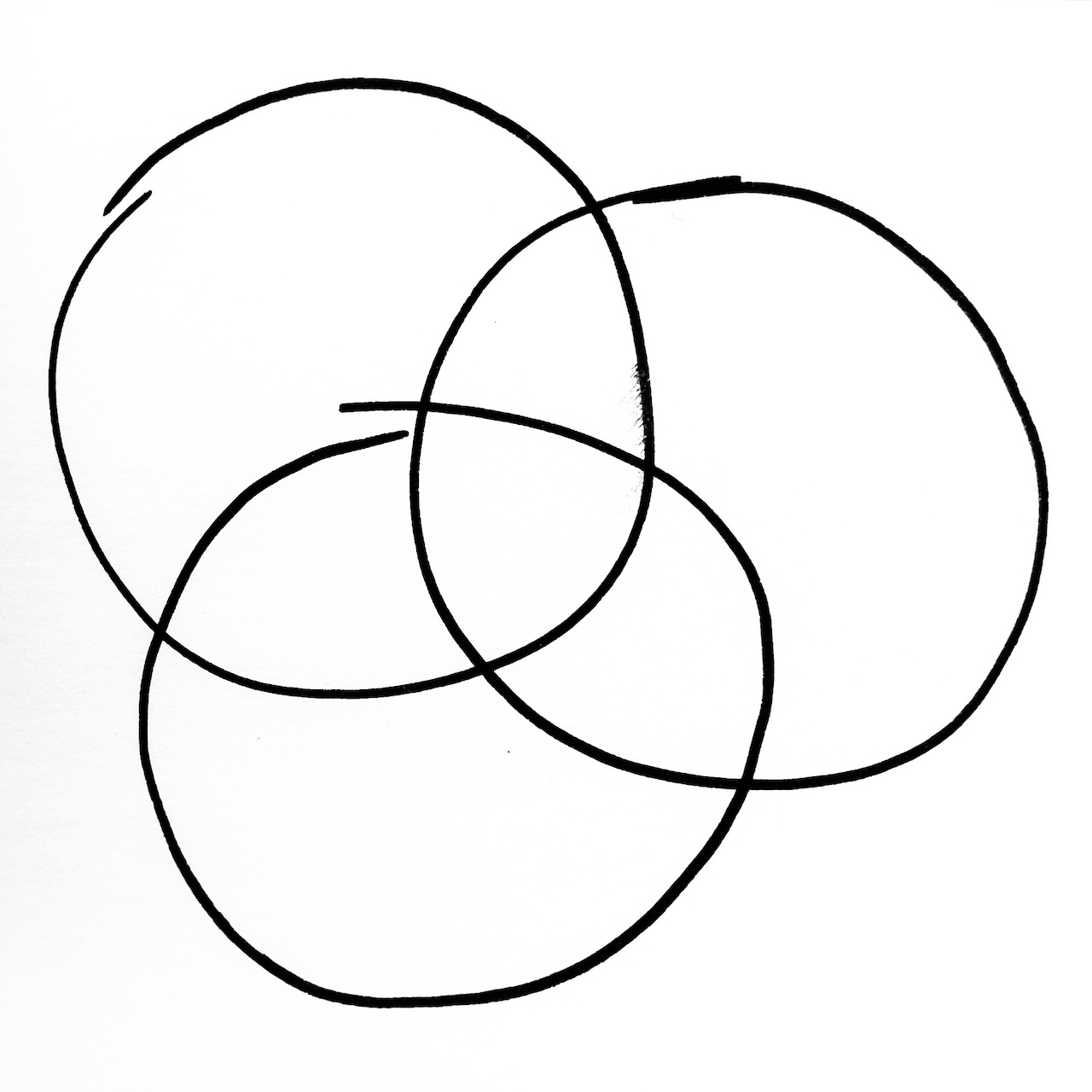
This is called a Venn diagram. It might be a bit tricky to get these circle right from the start, don’t shy away of using a roll of tape or a cup or bowl for help. Write the 3 things that you selected into the biggest pieces of your Venn diagram.
Example: Kids, Job, Environment
Step 4: Time to fill the overlaps. This exercise is not very easy, very often people tend to overthink this. Don’t forget: You can repeat this exercise, and there are no wrong answers. Dare to be intuitive.
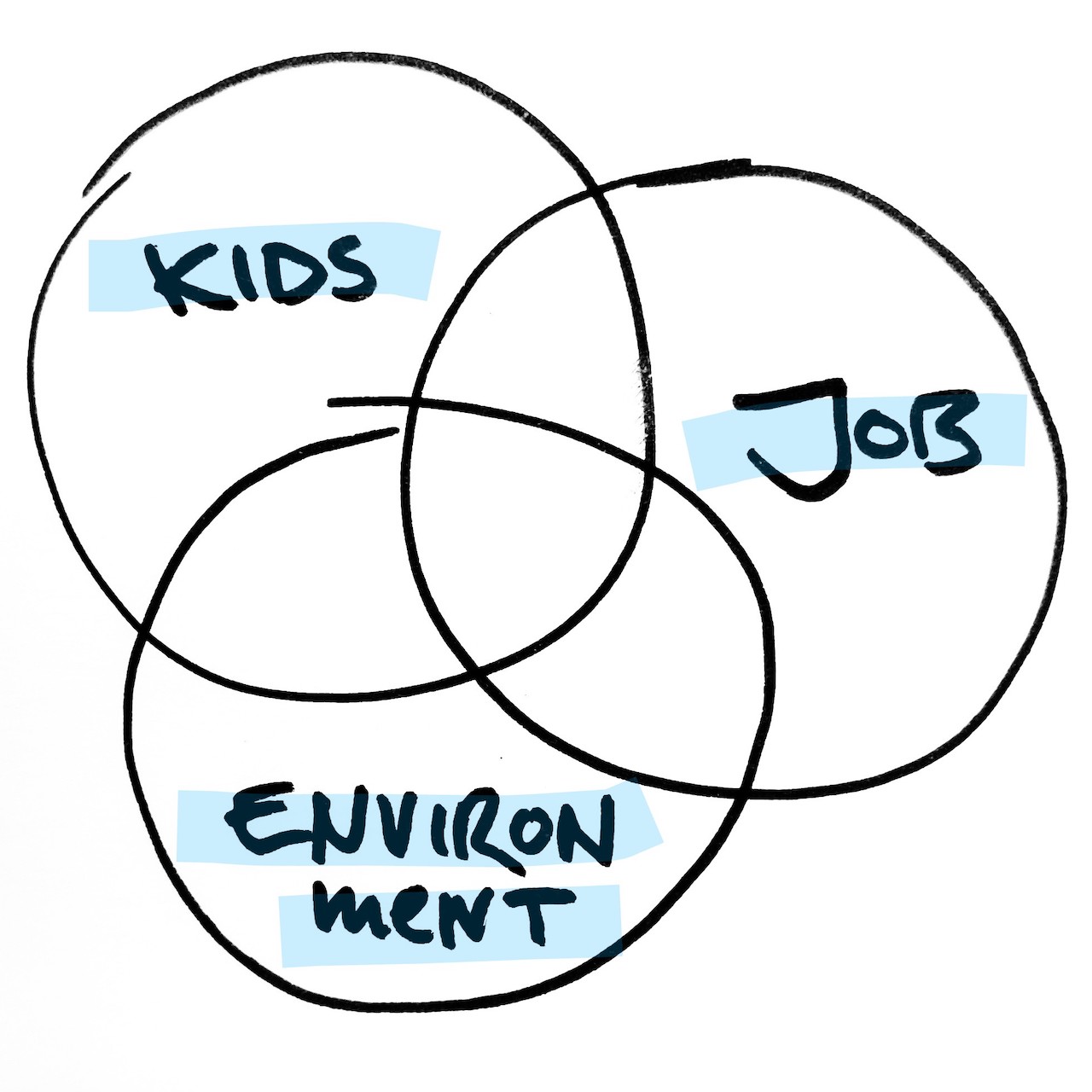
Find out how the words that you selected come together, pair by pair. Write down 3 pairs and come up with many possible solutions. Example:
Kids-Job: “I work to give them a future”, “I want them to run my company”, … Job-Environment: “I want to be sustainable”, “I want to protect nature”, … Environment-Kids: “I want to teach my kids …”, “Clean earth”
Pick your favourite variant(s) and put them in the gaps between the big circles
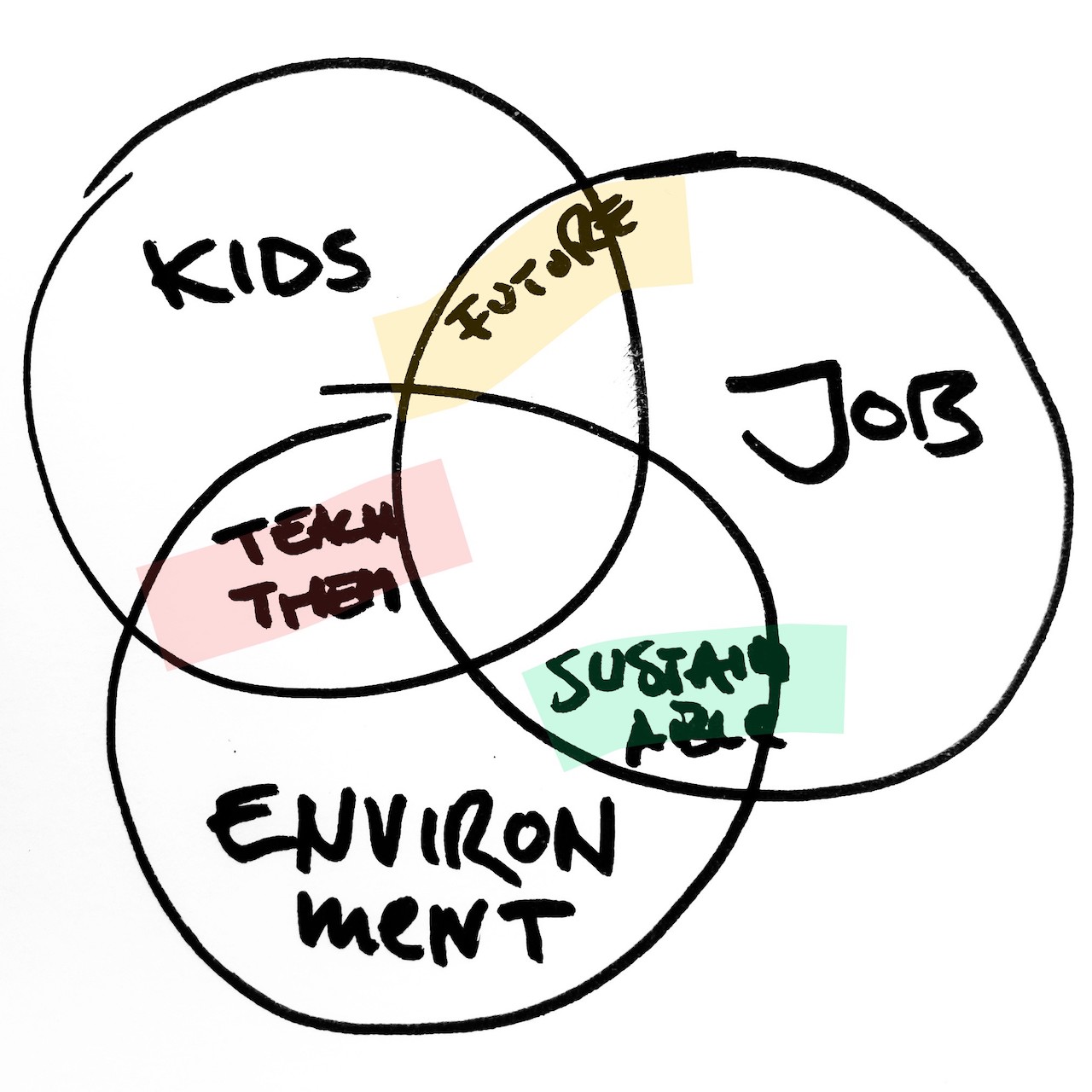
Step 5: You are getting close. Now try to fill the center – how do all of the things you wrote down come together?
Example: “My purpose is to give my kids a sustainable, secure future”
If you are unsure about the outcome, rinse & repeat with other items. Maybe your kids aren’t as important to you as you thought?
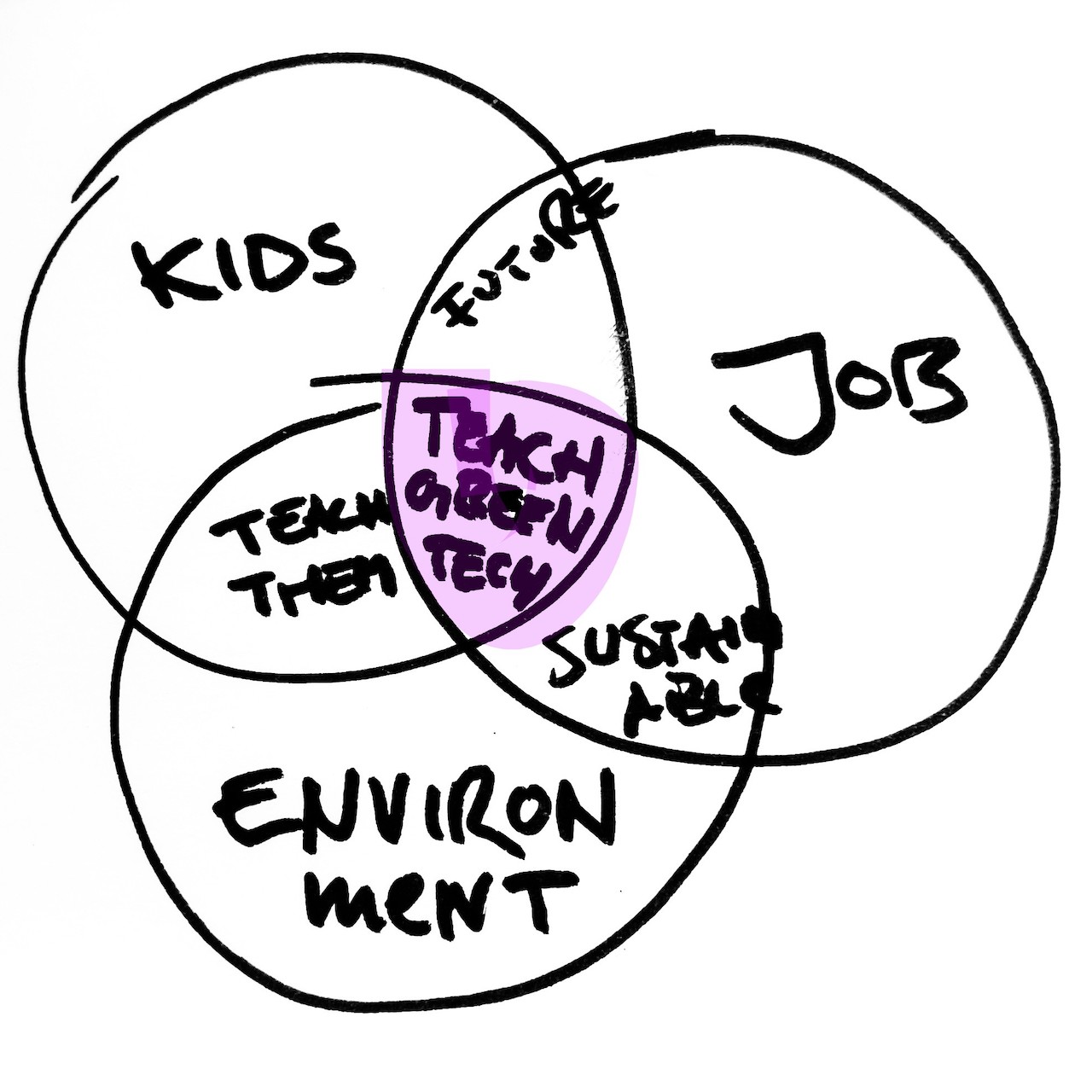
After you have done this for yourself, try doing it for your audience personas. What do they care about? What is their purpose in life? Using purpose mapping will allow you to take a deeper look into their world, making it easier for you to understand why they are doing the things they do. In our example, we didn’t pick the environment because we love trees or extinct animals, but because we want to build a future for our kids.
Purpose mapping will help you understand all of this better and give you and your brand a chance to help your audience achieve their purpose.
